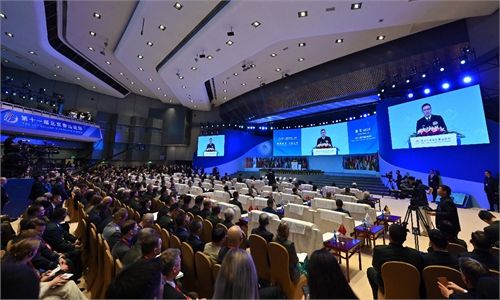THE South China Sea is a bustling waterway with growing freight and naval passages, combining widespread commercial and military interests.
More than 80% of world trade exceeding US$5 trillion (RM21.67 trillion) in value traverses these much-contested waters each year, fusing high economics with heated geopolitics.
Not least, the South China Sea sees a convergence of intemperate conduct by some claimant countries alongside some hard-nosed commonsensical prudence. Most claimants to these waters including Malaysia opt for the latter approach.
Brunei, China, Malaysia, Philippines, Taiwan and Vietnam are the contending claimants to part or all of the Spratlys, a group of rocks, reefs, shoals and other maritime features in the South China Sea.
Indonesia and China have rival claims to the Natuna Islands at the southern end of the sea, on the cusp of the Natuna Sea. Indonesia has renamed the area the North Natuna Sea, but whether that helps solidify its stake is unclear.
Among Malaysia’s claims are Luconia Shoals, at the mid-point between Sarawak’s shore and the fullest extent of Malaysia’s Exclusive Economic Zone (EEZ) 200 nautical miles from shore.
On August 29, the Philippine Daily Inquirer newspaper reported that China had sent a diplomatic note to the Malaysian Embassy in Beijing protesting Malaysia’s oil exploration activities at Luconia Shoals.
Such official notes between governments are nothing new, but always confidential or classified. How it leaked for the Inquirer to expose it to the world should be investigated, and Malaysia is doing that.
Context can help explain the newspaper’s motivation. Among all the claimant parties, the Philippines backed by its US ally’s military forces is the most assertive in trying to face down China on the high seas.
Until the first half of this year, Vietnam seemed to be an informal partner of the Philippines in confronting China over its claims. Then after an abrupt change of President and a Deputy Prime Minister, Vietnam warmed to China again and the Philippines was left without an Asean partner.
Exploiting the release of China’s diplomatic note could provoke Malaysia, or some Malaysians, to seek a tougher line with Beijing.
The news report described China’s mild note to Malaysia as a “warning”, just when China and Malaysia are on the best of terms marking the 50th anniversary of their diplomatic relations this year.
Rival claims between China, Taiwan, Vietnam and the Philippines are more conflated with one another than with Malaysia’s and Brunei’s limited claims further south. Philippine claims may be more troubling for Malaysia because of its on-off claims to Sabah and the implications on maritime territory off Borneo’s north coast.
On Dec 12, 2019, Malaysia filed its claim to an extended continental shelf with the UN Commission on the Limits of the Continental Shelf off northern Sabah. Both China and the Philippines were upset, but Manila displayed far more drama.
Beijing sent a delegation to Kuala Lumpur to seek clarification. In an unofficial capacity, I explained that Malaysia’s act was consistent with the UN Convention on the Law of the Sea (Unclos), which China and Malaysia had signed and ratified.
The delegation asked follow-up questions, took notes, and left without any complaint, argument or “warning”. The Philippines was particularly stung because Malaysia’s move undermined its claim to the entire Kalayaan Island Group between northern Sabah and southern Mindanao, and to Sabah itself, both of which Malaysia rejects.
The Marcos Jr government is not pressing Manila’s claim to Sabah, relegating it to a “private matter” among Sulu claimants. However, as long as their illegitimate claim to Sabah is not fully revoked and annulled, Philippine-Malaysia relations will remain constrained and their rival claims in the South China Sea will stay complicated.
Manila’s confrontational approach towards China is unlikely to gain traction from other Asean nations favouring pragmatism on at least five key issues.
First, the South China Sea disputes should see a conclusive resolution sooner or later, but preferably sooner rather than later.
Second, that resolution must be political and diplomatic, not military. There can be no military “solution” of any kind, so posturing on the high seas makes any resolution harder or impossible to achieve.
Third, naval brinkmanship begets naval brinkmanship. Residual goodwill, if any, disappears while the prospect of a peaceful settlement diminishes.
Fourth, avoiding force and confrontation in seeking a solution does not mean abandoning the search for solutions. Instead it reflects a thoughtful maturity enabling real solutions to be reached jointly, fully consistent with Asean’s Treaty of Amity and Cooperation that claimant parties already accept.
Fifth, talking to another claimant is to engage the other party in meaningful discussion. It does not imply accepting the other party’s rival claims unconditionally.
China’s nine-dash line in the South China Sea began as an 11-dash line of a 1947 official map by the Nationalist Government under Chiang Kai-shek’s Kuomintang Party. It lost the 1949 civil war and escaped to Taiwan, whose 11-dash line today still claims virtually all the South China Sea.
In 1952 Vietnam negotiated with China to remove two of the 11 dashes close to its coast. Later Taiwan’s provocations resulted in Beijing declaring a 10th-dash line off the island’s east coast but not in the South China Sea.
China’s nine-dash line claim covers such features as banks, cays, reefs and shoals in the area but not the international waters between them. Two important lessons from these developments are clear.
One, peaceful negotiations can result in a revision of the precise scope of China’s maritime claims. The Taiwan Strait and Taiwan, which claims more of the South China Sea than China, are “more core” to Beijing than the legacy claims of lines whose exact coordinates Chinese cartographers themselves are uncertain about.
Two, confrontations are much more likely to worsen the situation. In the headlong rush into military posturing threatening a war with no winners, the choice of which is the better, saner approach is obvious enough.

Related stories:
Of leaked notes and ruffled feathers
Xiangshan Forum Concludes After 3 Days of In-Depth Discussions
- China calls for pooling strength for peace at Beijing Xiangshan Forum
The 11th Beijing Xiangshan Forum entered its second day on Friday with an official opening ceremony highlighted by a congratulatory letter from Chinese President Xi Jinping and a keynote speech by Chinese Defense Minister Dong Jun, as the keyword “peace” became the dominant theme of the event.
By Liu Xuanzun, Wang Qi and Li Aixin | 2024/9/14 1:04:32 a
- Philippine ship's withdrawal from Xianbin Jiao shows China properly managed the situation, but vigilance toward future provocations necessary: experts
- Beijing Xiangshan Forum offers platform to address global challenges
China's top security and defense forum, the Beijing Xiangshan Forum, kicked off on Thursday with a series of high-end interviews on topics such as the Global Security Initiative, the Global South, the security in the Asia-Pacific and the China-US relations, as a record-breaking number of participants from more than 100 countries and international organizations gathered in Beijing under the theme of the event,
- #Opinion: It is a good thing that the Philippines has withdrawn the ship from China’s Xianbin Jiao, and other provocations will not work. The Philippine side should take this withdrawal as a beginning of changing its South China Sea policy and shift focus onto developing pragmatic relations with China. globaltimes.cn/page/202409/13
"Promoting Peace for a Shared Future."











